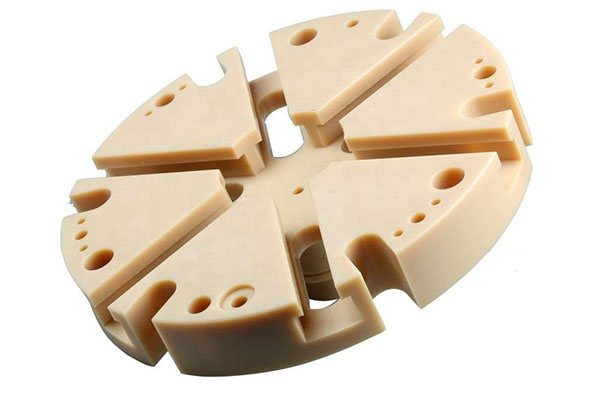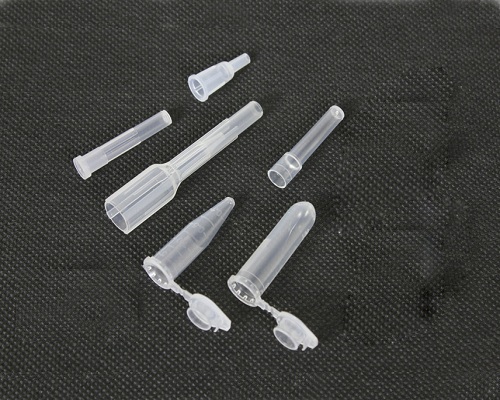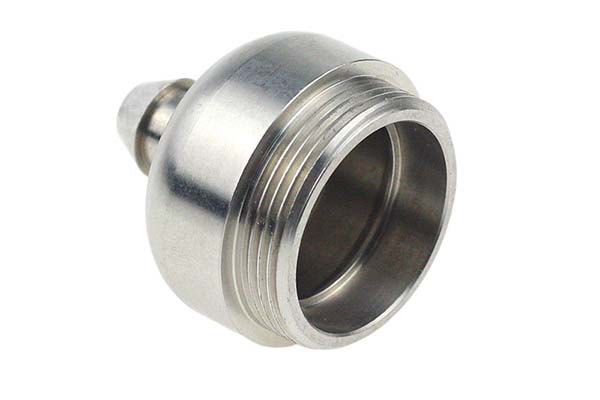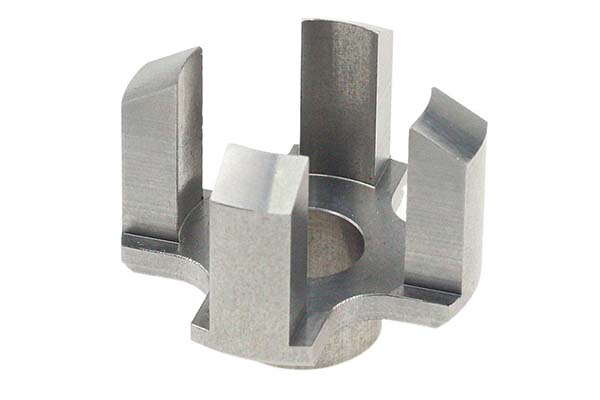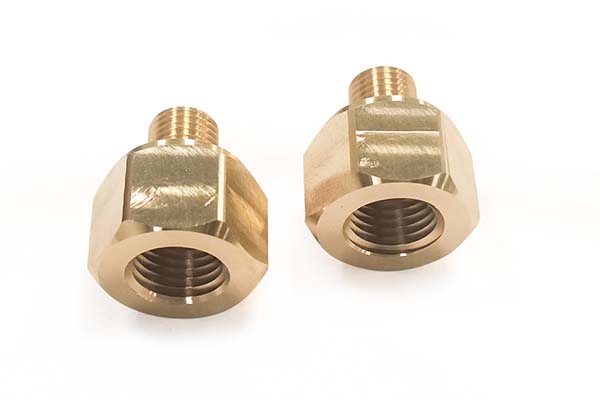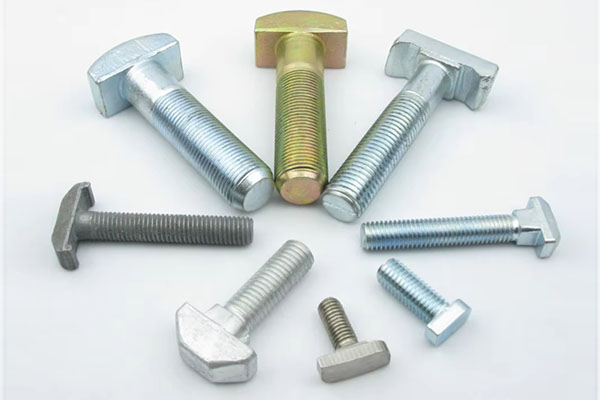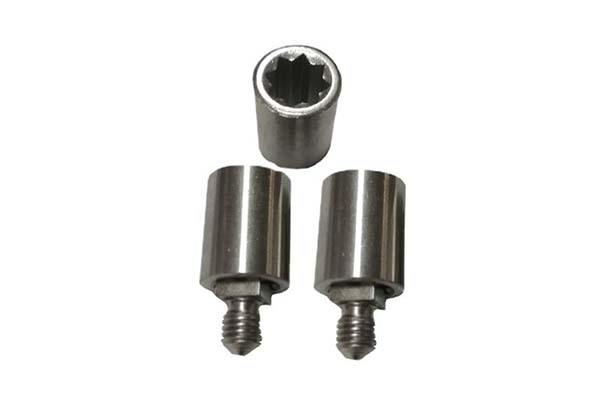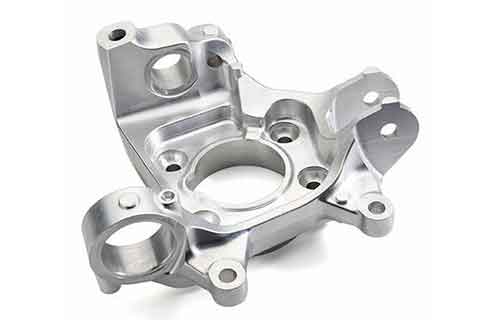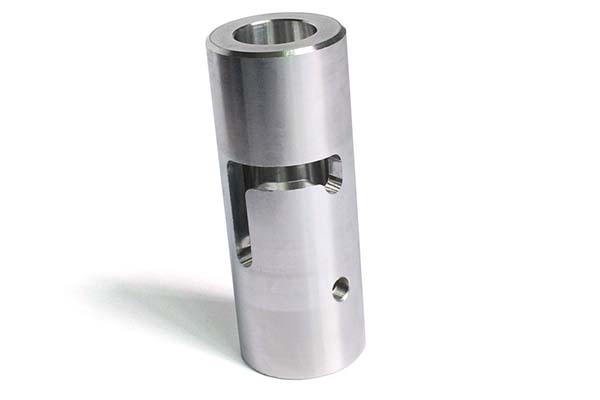Introduction
In the ever - evolving landscape of modern manufacturing, Plastic CNC Turning has emerged as a game - changing technology, revolutionizing the way plastic components are produced. This innovative process combines the precision of Computer Numerical Control (CNC) technology with the versatility of plastic materials, opening up new possibilities across a wide range of industries.
The demand for plastic components has been steadily rising due to their numerous advantages, such as lightweight, corrosion - resistance, and cost - effectiveness. In the past, traditional plastic manufacturing methods like injection molding had limitations in terms of complexity and customization. However, Plastic CNC Turning has bridged this gap, enabling the creation of highly intricate and customized plastic parts with remarkable precision.
According to market research, the global CNC machining market is projected to grow at a significant compound annual growth rate in the coming years, with plastic CNC turning being a major contributor to this growth. This upward trend is driven by the increasing need for high - quality plastic components in industries like aerospace, automotive, electronics, and medical. As these industries continue to innovate and demand more complex and precise parts, plastic CNC turning is becoming an essential manufacturing solution. So, let's dive deeper into the world of plastic CNC turning and explore how it is transforming the manufacturing industry.
What is Plastic CNC Turning?
?
Definition and Basic Principle
Plastic CNC Turning is a subtractive manufacturing process that uses computer - controlled precision machinery to shape plastic materials into custom - designed components. In this process, a plastic workpiece is secured onto a rotating spindle. As the spindle rotates, precision cutting tools, such as single - point cutting tools, are moved along multiple axes (usually X, Y, and Z axes in a 3 - axis CNC lathe) to remove excess material from the workpiece.
The movement of the cutting tools is precisely controlled by a pre - programmed set of G - codes and M - codes. G - codes are used to control the motion of the axes, specifying details like linear and circular interpolation, while M - codes manage functions such as spindle start/stop, coolant on/off, and tool changes. This high - level of automation and precision control allows for the creation of plastic parts with tight tolerances, often within the range of ±0.001 inches or even better in some advanced setups.
How it Differs from Traditional Turning
| Aspect | Plastic CNC Turning | Traditional Turning |
| Processing Precision | Can achieve extremely high precision, with tolerances often as low as ±0.001 inches. Ideal for creating parts with complex geometries and tight tolerances, such as those in the aerospace and medical device industries. | Typically has lower precision compared to CNC turning. Tolerances are usually in the range of ±0.01 inches, which may not be sufficient for highly precise applications. |
| Efficiency | Highly automated, allowing for continuous operation with minimal operator intervention once the program is set up. Multiple parts can be produced in a single run, and the process can be easily replicated for mass production. This significantly reduces production time, especially for complex parts. | Requires more manual operation, including frequent adjustments of the cutting tools and the workpiece. Production speed is slower, and it is more time - consuming to produce complex parts, making it less suitable for large - scale production. |
| Complexity of Machining | Capable of handling complex 3D geometries. The CNC system can control the movement of the cutting tools in multiple axes simultaneously, enabling the creation of intricate shapes, threads, and contours on plastic workpieces. | Limited in its ability to create complex shapes. Traditional lathes mainly perform simple turning operations, such as cylindrical turning, facing, and threading, and it is difficult to produce parts with complex 3D features without significant additional effort and expertise. |
| Tooling and Setup | Requires initial investment in CNC machines and programming software. However, once the setup and programming are complete, the process can be repeated with high accuracy for different batches of the same part. Tool changes can be automated in many CNC lathes, reducing downtime. | Requires more frequent manual tool changes and setup adjustments for different operations and part designs. The setup process can be time - consuming and requires skilled operators to ensure accurate alignment of the tools and workpiece. |
| Cost - effectiveness for Different Production Volumes | Cost - effective for medium - to - high volume production due to its high efficiency and repeatability. Although the initial investment in equipment is high, the per - unit cost decreases as the production volume increases. For low - volume production, the cost may still be relatively high due to the setup and programming time involved. | More cost - effective for low - volume production or one - off prototypes as the initial investment in equipment is lower. However, for high - volume production, the high labor cost and low production efficiency can make it more expensive per unit compared to plastic CNC turning. |
Applications of Plastic CNC Turning
In the Automotive Industry
Plastic CNC turning plays a crucial role in the automotive industry. In terms of interior components, it is used to create intricate and precise air vents. These vents need to have a specific shape and size to ensure proper air circulation within the vehicle cabin. With plastic CNC turning, manufacturers can achieve tight tolerances, ensuring that each vent fits perfectly into the dashboard assembly. For example, vents with adjustable louvers require high - precision parts to enable smooth operation, and plastic CNC turning can deliver such components.
When it comes to automotive parts, plastic CNC - turned pulleys are widely used. These pulleys are lightweight yet durable, which helps in reducing the overall weight of the engine and improving fuel efficiency. They can be designed with complex grooves and profiles to ensure a secure fit with belts, transmitting power effectively. According to industry data, the use of plastic components in cars has been steadily increasing, with plastic CNC - turned parts contributing significantly to this growth, as they can be customized to meet the specific requirements of different automotive models.
In the Electronics Field
In the electronics industry, the demand for miniaturization and high - precision components has led to the extensive use of plastic CNC turning. For electronic device housings, plastic CNC - turned parts offer excellent protection for internal components. For instance, the cases of high - end smartphones often require precise cutouts for buttons, ports, and cameras. Plastic CNC turning can create these cutouts with extreme accuracy, ensuring a sleek and seamless appearance.
Inside electronic devices, plastic CNC - turned components are also essential. Small gears used in the camera autofocus mechanisms of smartphones or tablets need to be highly precise. These gears are made from plastic materials using CNC turning to achieve the necessary tolerances for smooth and accurate movement. A study shows that in the past decade, as the complexity of electronic devices has increased, the use of plastic CNC - turned parts in the electronics field has grown by over 50%, highlighting their importance in enabling the development of smaller and more powerful electronic products.
In Medical Devices
The medical device industry benefits greatly from plastic CNC turning. In the production of prosthetics, plastic CNC - turned sockets are custom - made to fit the unique shapes of patients' residual limbs. These sockets need to be comfortable, lightweight, and durable. Plastic CNC turning allows for the creation of highly customized sockets that can provide a better fit and improve the overall functionality and comfort for amputees.
Medical instrument components, such as the housings for surgical tools or the internal parts of diagnostic equipment, are also often made using plastic CNC turning. These parts must meet strict quality and hygiene standards. The precision of plastic CNC turning ensures that these components are free from defects and can be easily sterilized, contributing to the safety and effectiveness of medical devices. For example, in endoscopic equipment, the plastic components made by CNC turning need to be smooth and have tight tolerances to ensure proper insertion and operation within the human body.
Yigu Technology's Perspective
As a non - standard plastic metal products custom Supplier, Yigu Technology has witnessed firsthand the transformative power of Plastic CNC Turning. With years of experience in the industry, we understand the unique requirements and challenges of producing high - quality plastic components.
Our state - of - the - art facilities are equipped with advanced CNC turning machines, enabling us to achieve the highest levels of precision and quality in our plastic parts production. We have a team of highly skilled engineers and technicians who are proficient in programming and operating these machines. They are constantly exploring new techniques and materials to optimize the plastic CNC turning process, ensuring that we can meet the most demanding customer requirements.
We believe that the future of plastic CNC turning is bright, with continuous advancements in technology and materials. As industries continue to demand more complex and precise plastic components, we are committed to staying at the forefront of innovation, providing our customers with the best - in - class plastic CNC turning solutions. Whether it's developing new materials for better performance or improving our manufacturing processes for higher efficiency, Yigu Technology is dedicated to driving the growth and development of the plastic CNC turning industry.
FAQ
What types of plastics are suitable for CNC turning?
Plastics like ABS, nylon, polycarbonate, POM (Delrin), PTFE (Teflon), HDPE, and PEEK are highly suitable for CNC turning. ABS offers good mechanical properties, impact resistance, and is easy to machine, making it ideal for various applications such as prototypes and product housings. Nylon has excellent wear and chemical resistance, often used for parts like gears and bearings. Polycarbonate is known for its high toughness and optical clarity, suitable for components in the electronics and automotive industries where both strength and transparency are required. POM has high stiffness, low friction, and good dimensional stability, making it perfect for precision parts. PTFE has outstanding chemical and heat resistance with a low friction coefficient, commonly used in applications like seals and linings. HDPE has a high strength - to - weight ratio and good weather resistance, suitable for outdoor and plumbing applications. PEEK is a high - performance plastic with excellent mechanical properties and heat stability, often used in aerospace and medical applications to replace metal parts. These plastics can withstand the cutting forces and heat generated during CNC turning and can achieve the required precision and surface finish.
How to ensure the surface quality of plastic parts in CNC turning?
To ensure the surface quality of plastic parts in CNC turning, several key steps should be taken. First, select the right cutting tools. For example, use sharp carbide - tipped tools for hard plastics like PEEK and high - speed steel tools for softer plastics such as HDPE. Dull tools can cause scratches and rough surfaces. Second, optimize the cutting parameters. Adjust the cutting speed, feed rate, and depth of cut according to the plastic material. For instance, a slower cutting speed may be needed for heat - sensitive plastics to prevent overheating and surface melting. Third, proper cooling is crucial. Use a coolant that is compatible with the plastic material, such as a non - aromatic, water - soluble coolant for most plastics. This helps to reduce heat, prevent plastic softening, and flush away chips, which can otherwise damage the surface. Fourth, minimize clamping forces. Over - clamping can cause stress on the plastic part, leading to deformation and surface defects. Use fixtures that distribute the clamping force evenly. Finally, ensure the CNC machine is well - maintained and calibrated regularly to guarantee consistent and accurate movement, which is essential for a smooth surface finish.
Can Plastic CNC Turning be used for large - scale production?
Yes, Plastic CNC Turning can be used for large - scale production, but several factors need to be considered. The high precision and repeatability of CNC turning make it possible to produce identical parts consistently, which is crucial for large - scale manufacturing. However, the initial investment in CNC machines, programming, and tooling is relatively high. To make it cost - effective for large - scale production, it is advisable to optimize the production process. This includes streamlining the programming to reduce setup times between batches, using automated tool - changing systems to minimize downtime, and choosing materials that are readily available and cost - efficient. Additionally, consider the production volume carefully. For extremely high - volume production, injection molding may still be more cost - effective in the long run due to its lower per - unit production cost once the mold is developed. But for medium - scale production or when high precision and customization are required even in large quantities, Plastic CNC Turning can be a viable and efficient option.
